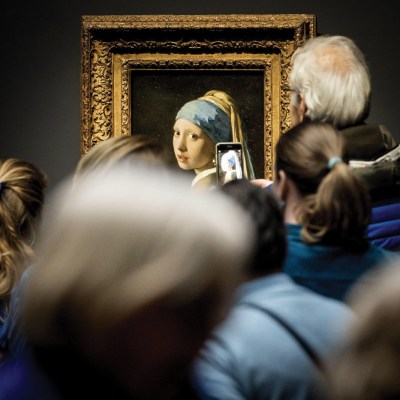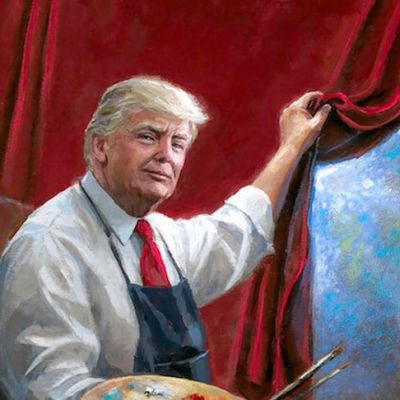From the July/August 2024 issue of Apollo. Preview and subscribe here.
In March this year the annual art market report carried out by Arts Economics for UBS and Art Basel featured an article by lawyers Till Vere-Hodge and Katalin Andreides entitled ‘Navigating a Sea of Instability’. And indeed, it looks very much as if the art market, already rocked by a decline in sales, is facing more turbulence as the year progresses.
Yet just a year ago, the mood tended towards optimism. In the 2023 UBS-Art Basel report, Vere-Hodge and Andreides were upbeat, writing that ‘Following recent upheavals, the international art trade […] will be glad to hear the coming year is predicted to be an auspicious one.’
Sadly, they were too optimistic. Since they wrote those words, the world has seen increased turbulence, disrupting everything from supply chains to alliances. As well as the obvious issues – the geopolitical situation includes conflicts in the Middle East and the Russia-Ukraine war, looming elections and the political uncertainty that stems from those – there is ongoing tension in the South China Sea.
Then there are the complications due to sanctions against Russia, which have an impact on the art trade. One auction house employee pointed out to me that it can be very difficult to verify that the vendor of an item, whether it’s a painting or a watch, is not under sanctions, since the owner may be hiding behind a figurehead. In just one example, a recent case in the United States saw a Russian oligarch, Andrei Kostin, accused of sanction-busting by getting two friends to sell an Aspen mansion and three artworks for him for $1m, as well as maintaining his two luxury yachts. That case is ongoing.
There are other ways of circumventing sanctions. Anecdotally, I have heard that shippers in Dubai are seeing an uptick in business, thanks to works of art being sent by Russians to Dubai and on to the UK for sale. The UAE decided not to back Western sanctions on Russia and this has certainly triggered an influx of Russians into the Gulf state.
Then there are the elections. At the time of writing, the UK is preparing for a general election that will very probably see a Labour victory. While the Labour Party has stated it has ‘no plans’ to raise certain taxes, that is hardly a firm nyet, and the art trade in the UK will fear its clients will be hit in the wallet, one way or another.
Meanwhile in America, uncertainty surrounds the November elections. If Donald Trump wins we can expect changes in trade tariffs – to the detriment of anyone attempting to import goods to the United States. Considering that the United States remains, by a long chalk, the world’s biggest art market, this could have a severe impact on the art trade. ‘Trump has pledged draconian measures on trade,’ says Paul Donovan, UBS’s chief economist.
Andy Warhol’s Flowers (1964) sold at Christie’s for $35.5m in May 2024, but trouble is beginning to bloom in the market. Photo: Timothy A. Clary/AFP via Getty Images

Back in Europe, the waters are choppy as well. One issue is the threats to the VAT margin scheme, which allowed dealers to avoid double taxation – they applied reduced VAT on import, and on resale only paid VAT on the difference between the buying and selling price for works of art. The British trade is lobbying for import VAT – which is currently 5 per cent and, as the lowest in Europe, was a major advantage for the art trade before Brexit – to be abolished completely.
But competition from the EU is hotting up: bonjour the EU Directive 2022/542. This new directive, which will be applicable in just six months, is aimed at aligning the various VAT regimes in member countries. In theory it means that every country will have to apply full VAT to sales of art, not just on the margin, though member states are doing their best to apply for independent rates of VAT on artworks.
France, mindful of its growing strength as Europe’s biggest art market, has announced it will only apply 5.5 per cent on resale, as well as maintaining the 5.5 per cent VAT on imports. The Belgian art trade has already started an online petition to head off an impending increase of VAT – in that country it is already 6 per cent on art imports, to which another 21 per cent VAT would be charged. Germany has announced that it will apply rates of 7 per cent on VAT. European countries, within or outside the EU, are likely to fight fiercely on this terrain. Another disruption concerns money laundering, and here there is a worrying new element for the art market. A limit of €10,000 for cash payments is already established across the EU and UK, but now EU states can set a lower amount of just €3,000 per sale or series of transactions. Once again, art market participants are expected to verify their identities even for this smaller sum – adding to their administrative burden.
Finally, there is a lot of uncertainty around artificial intelligence and here again there are differences between the United States, the UK and the EU’s approaches, creating turbulence. Each area wants to deal with AI differently – the UK would like ‘light touch’ regulation so it can become a ‘global AI superpower’.
Meanwhile the EU is busy implementing its own AI Act, which came into force in June, while the United States takes a more principles-based approach. But the tech is evolving so fast that regulation has a difficult time keeping up.
So, stormy weather is in view, but the good news is that it is not yet time to get out the life jackets. The spring New York auctions clocked up a total of almost $1.4 billion – a decline of 22 per cent compared to the year before, but evidence that while art sales were down, they were certainly not out.
Georgina Adam’s most recent book is The Rise and Rise of the Private Art Museum (Lund Humphries).
From the July/August 2024 issue of Apollo. Preview and subscribe here.



